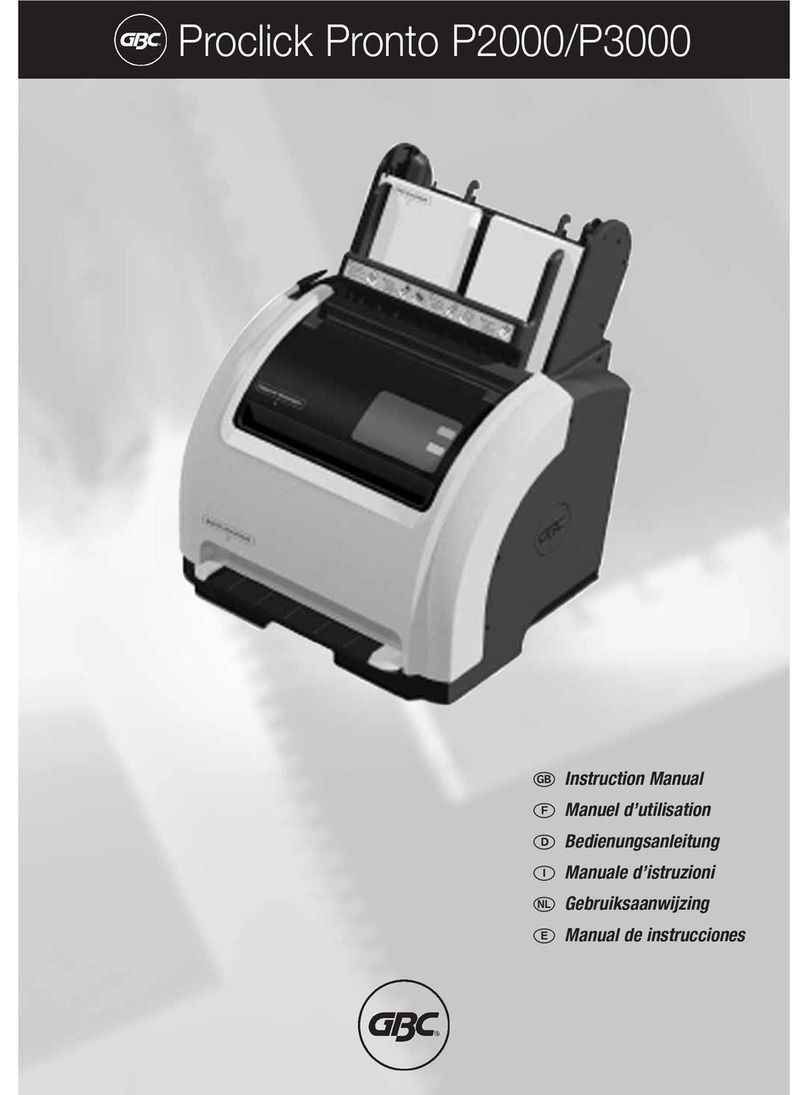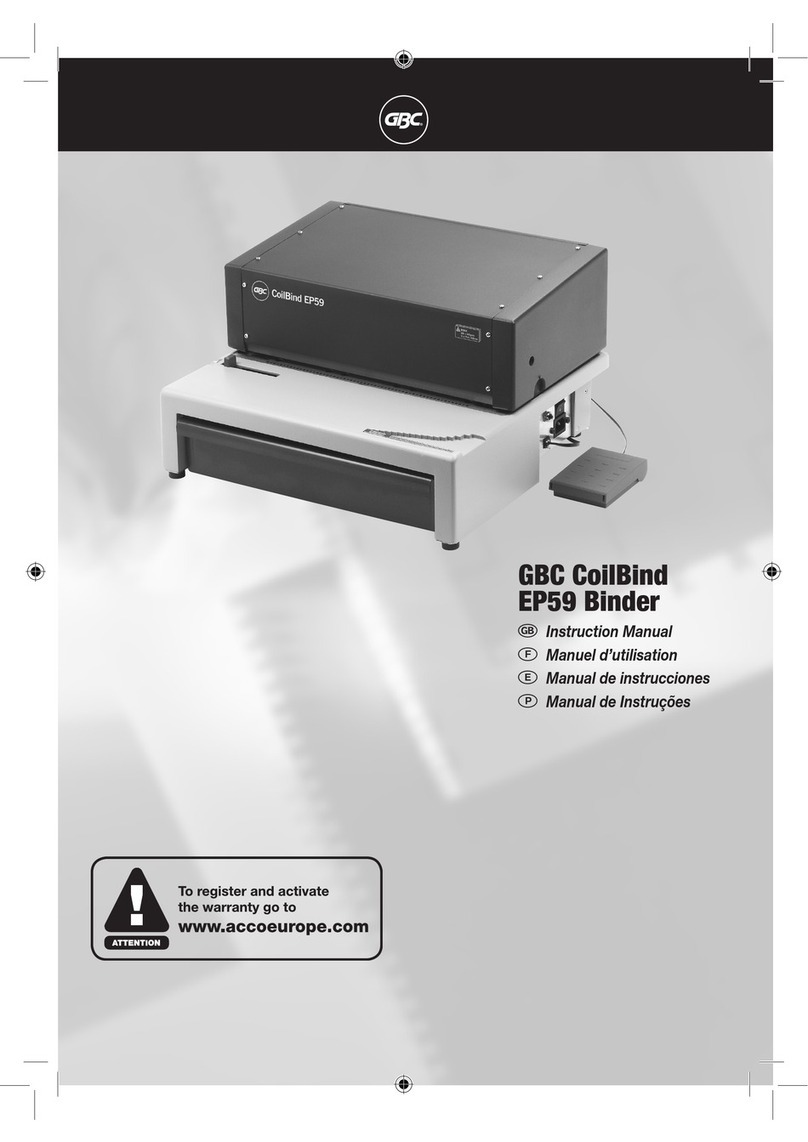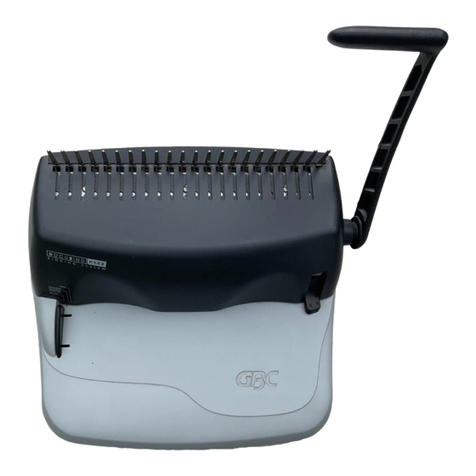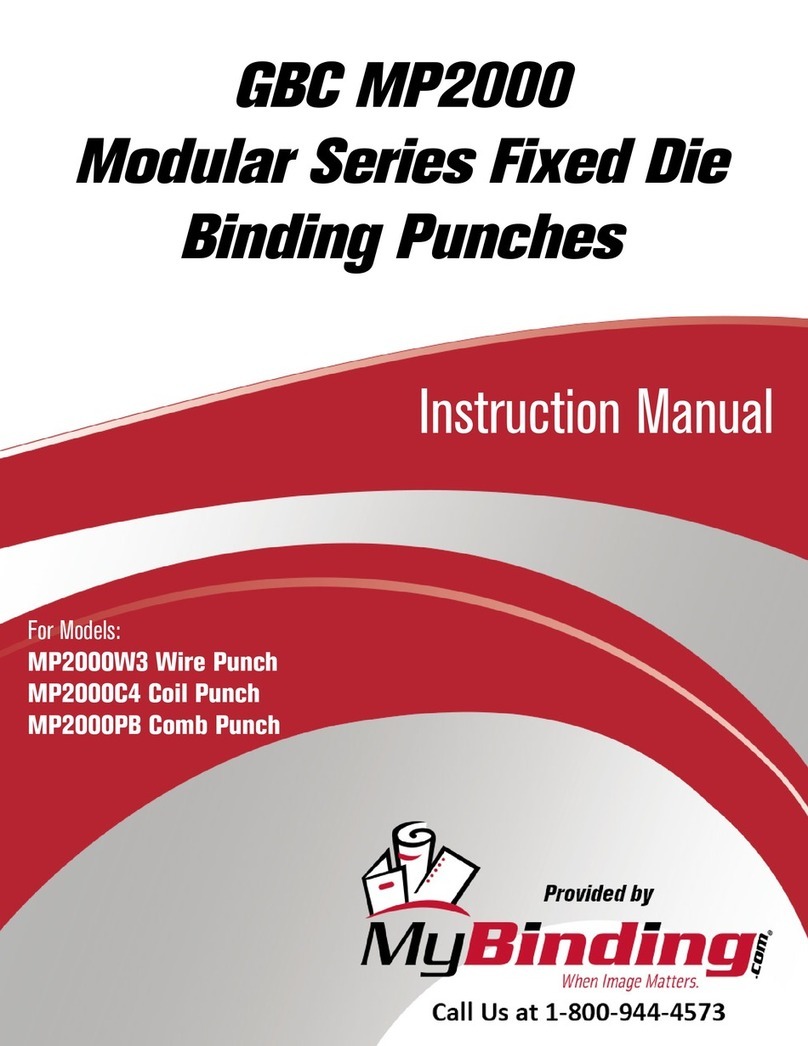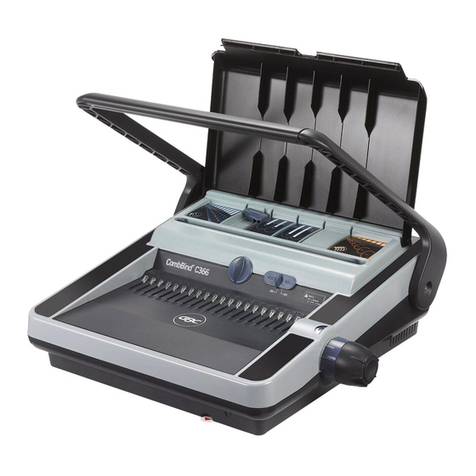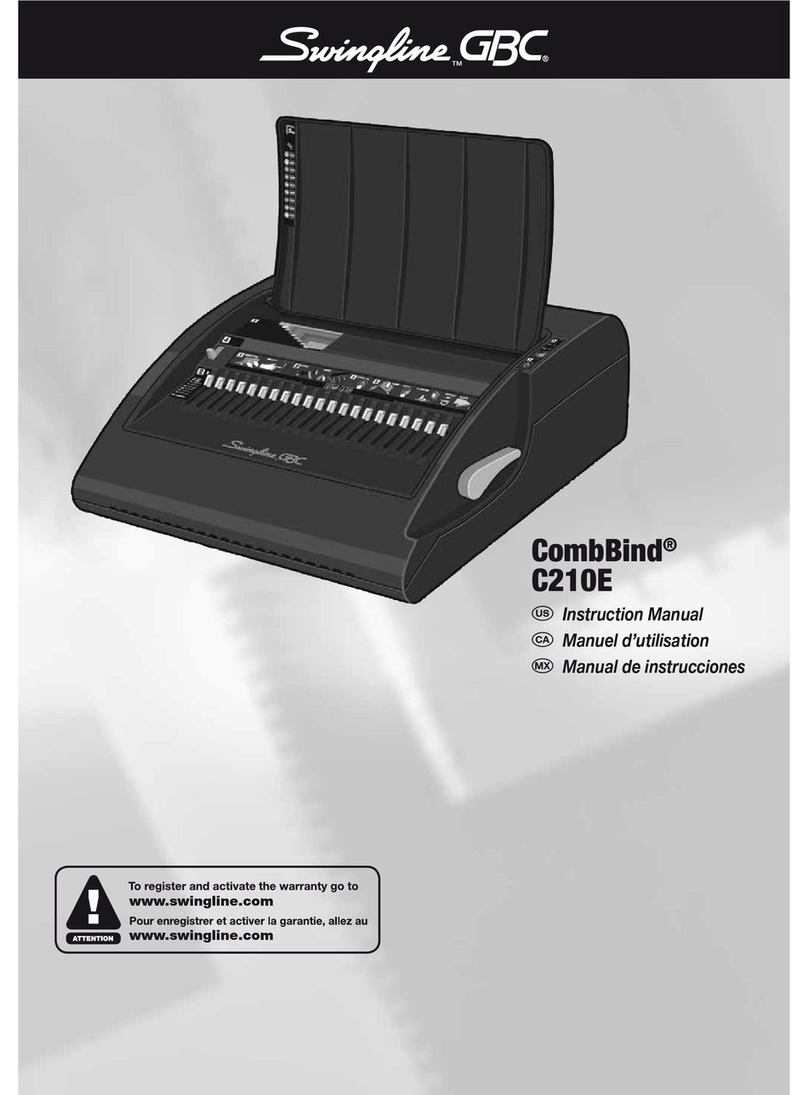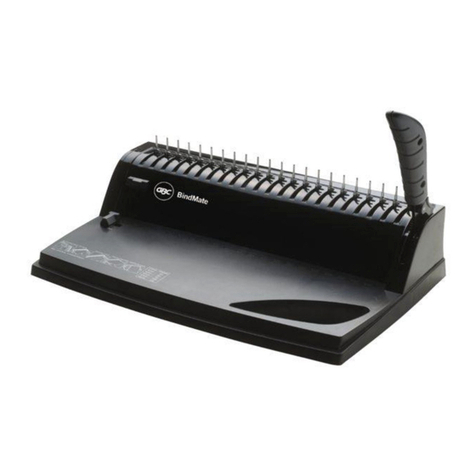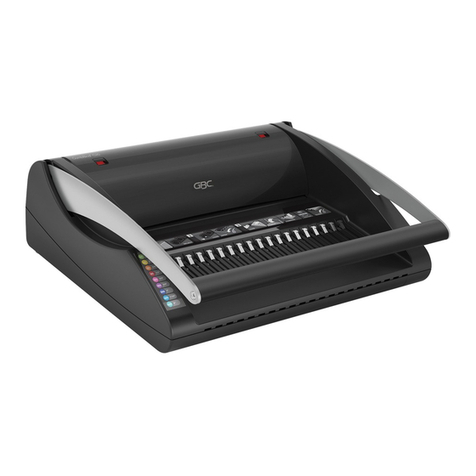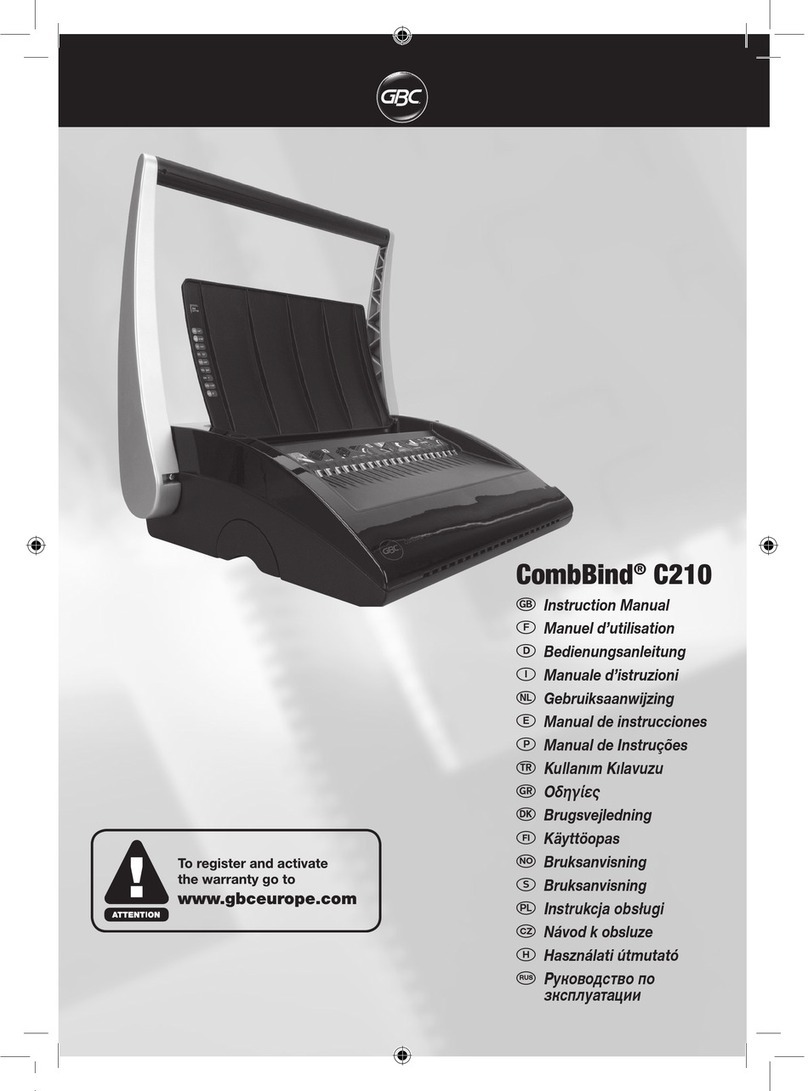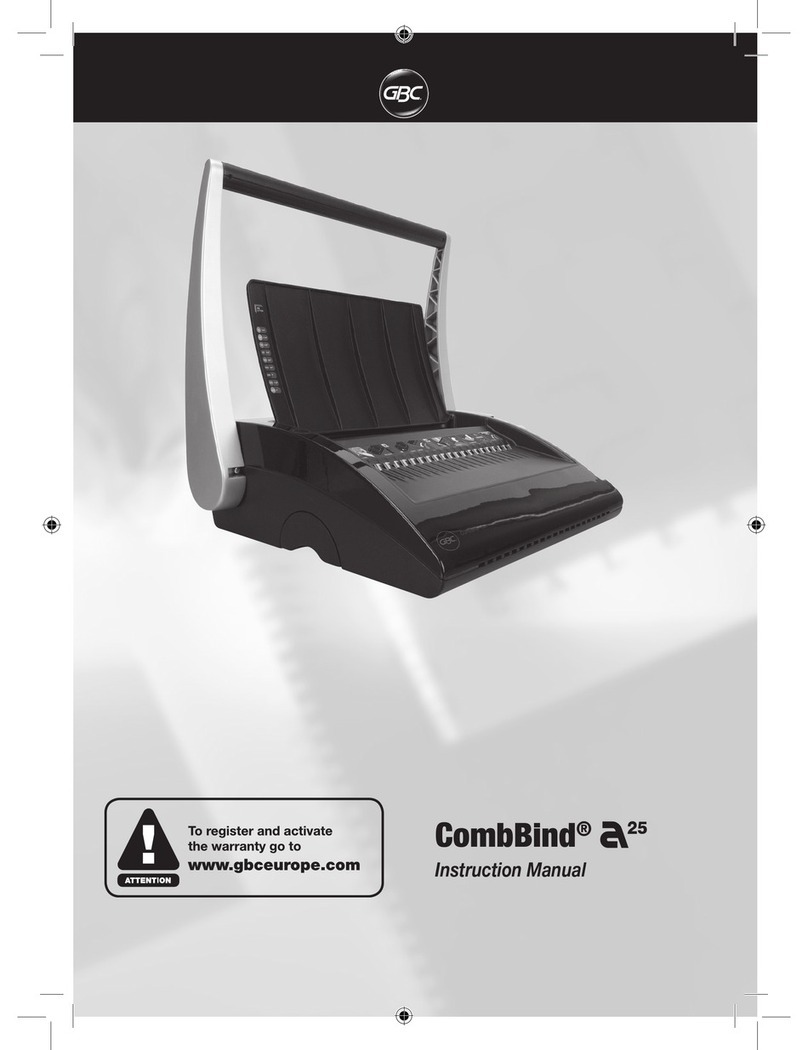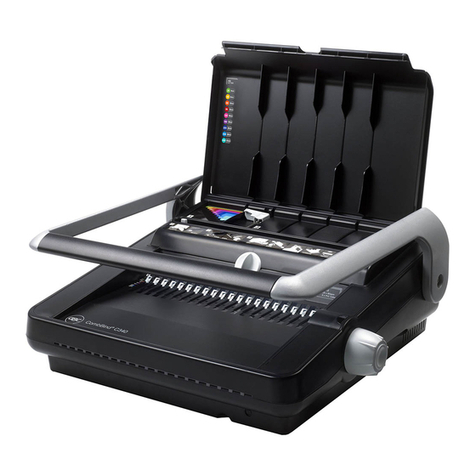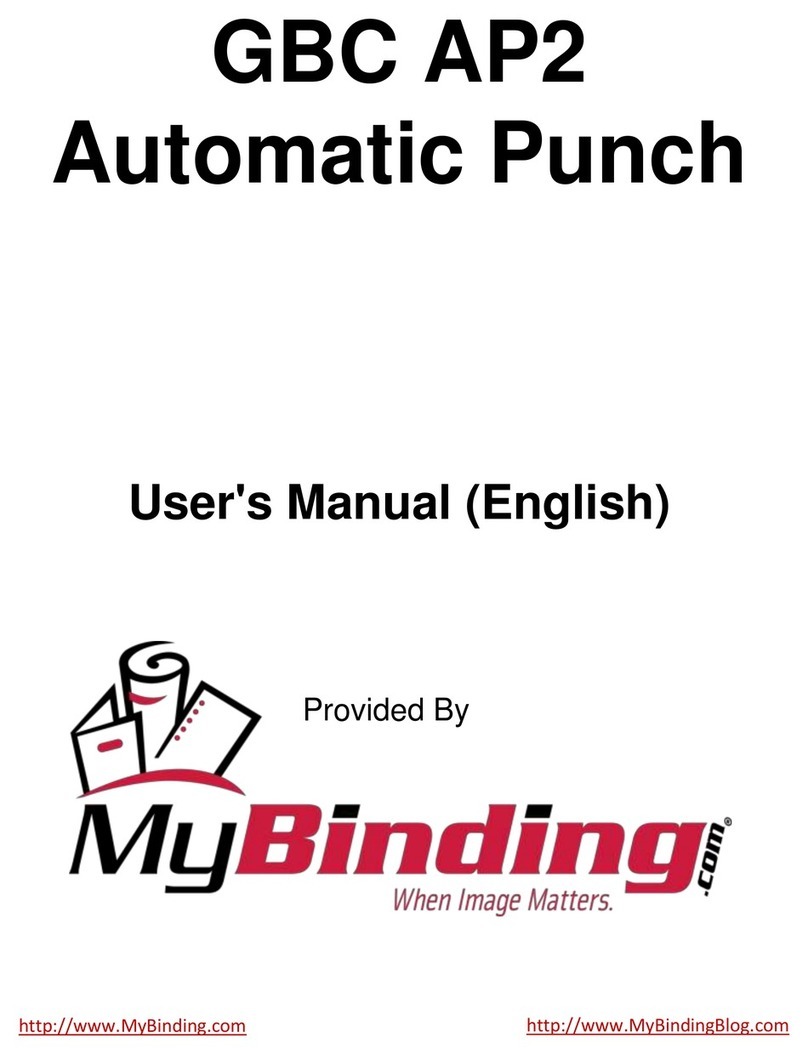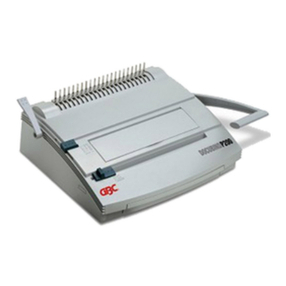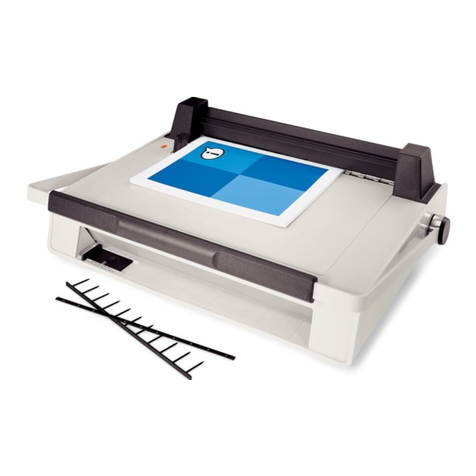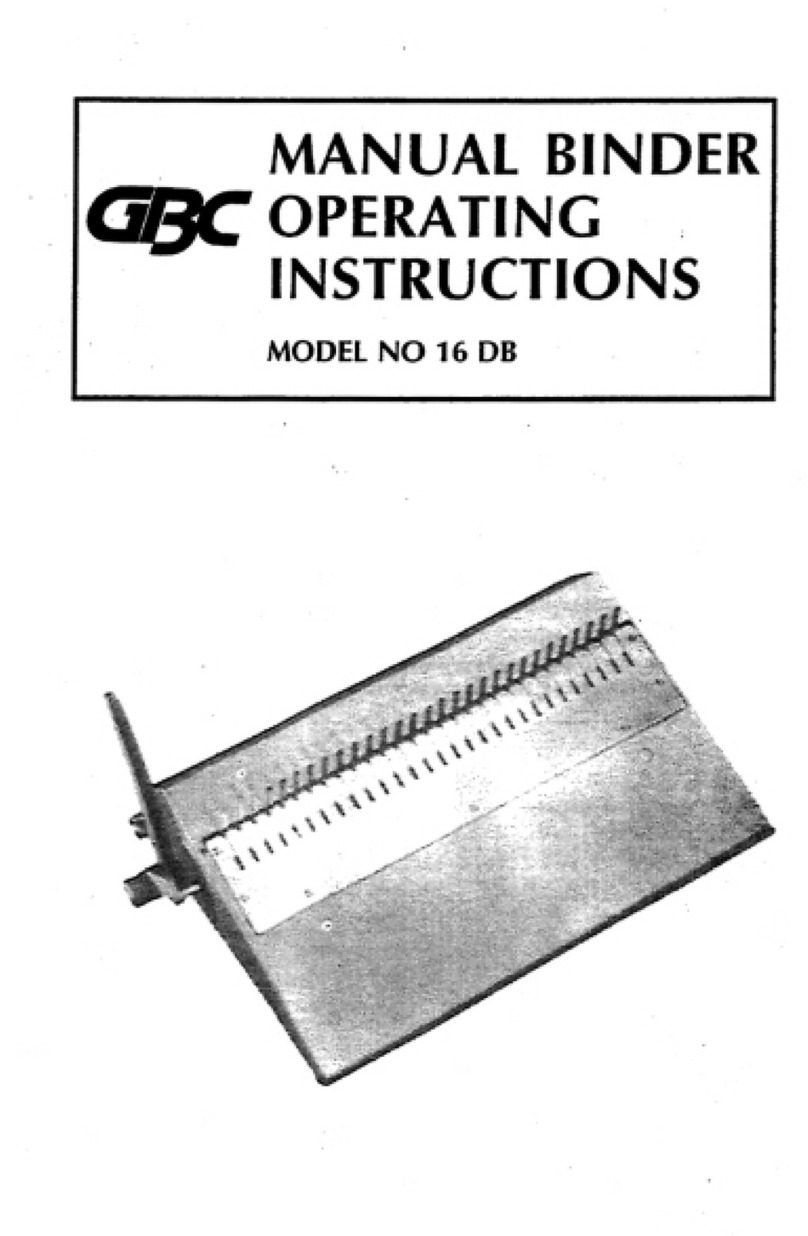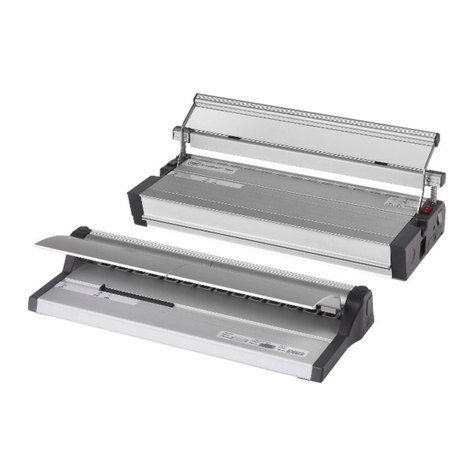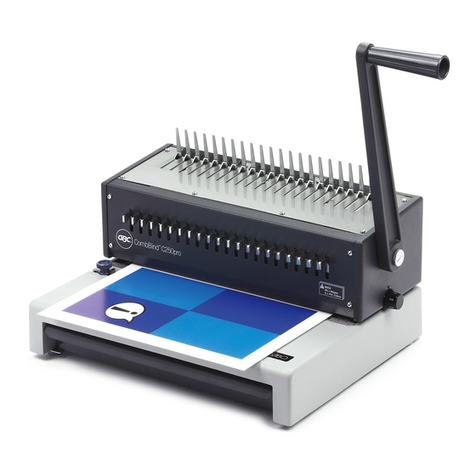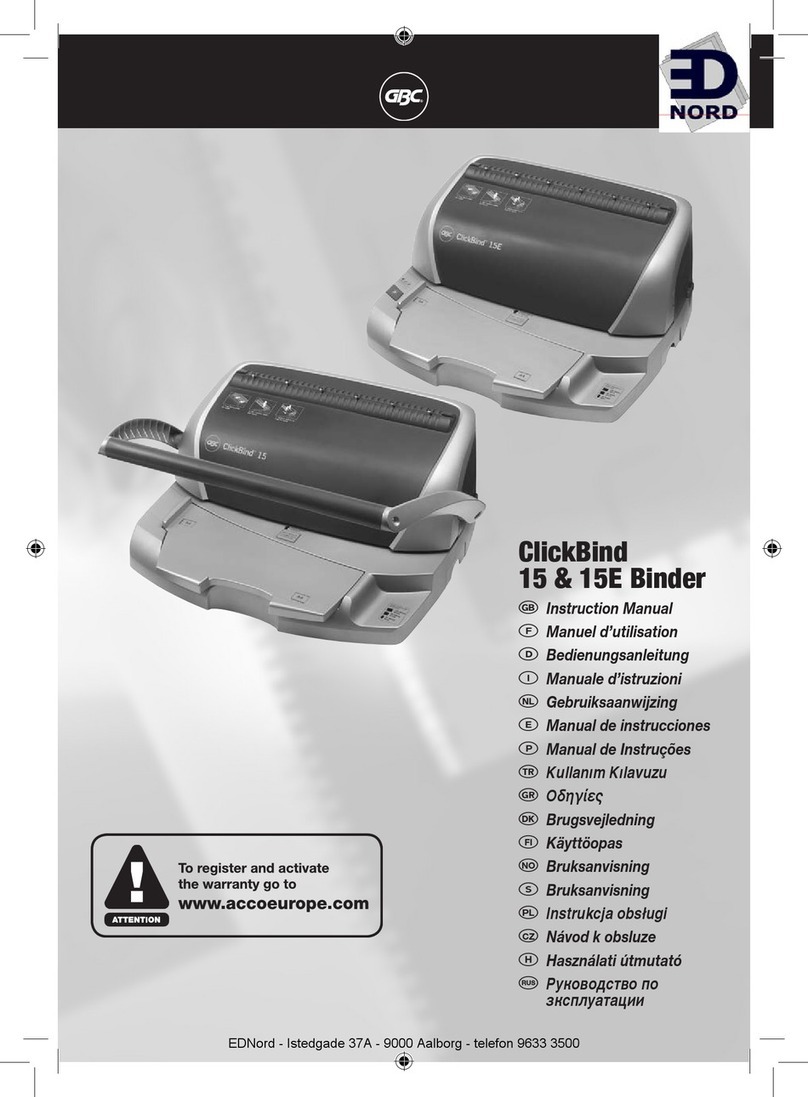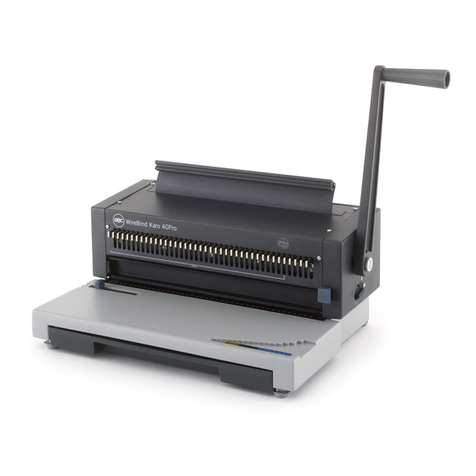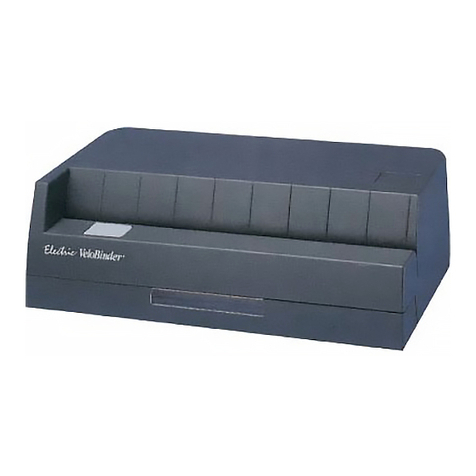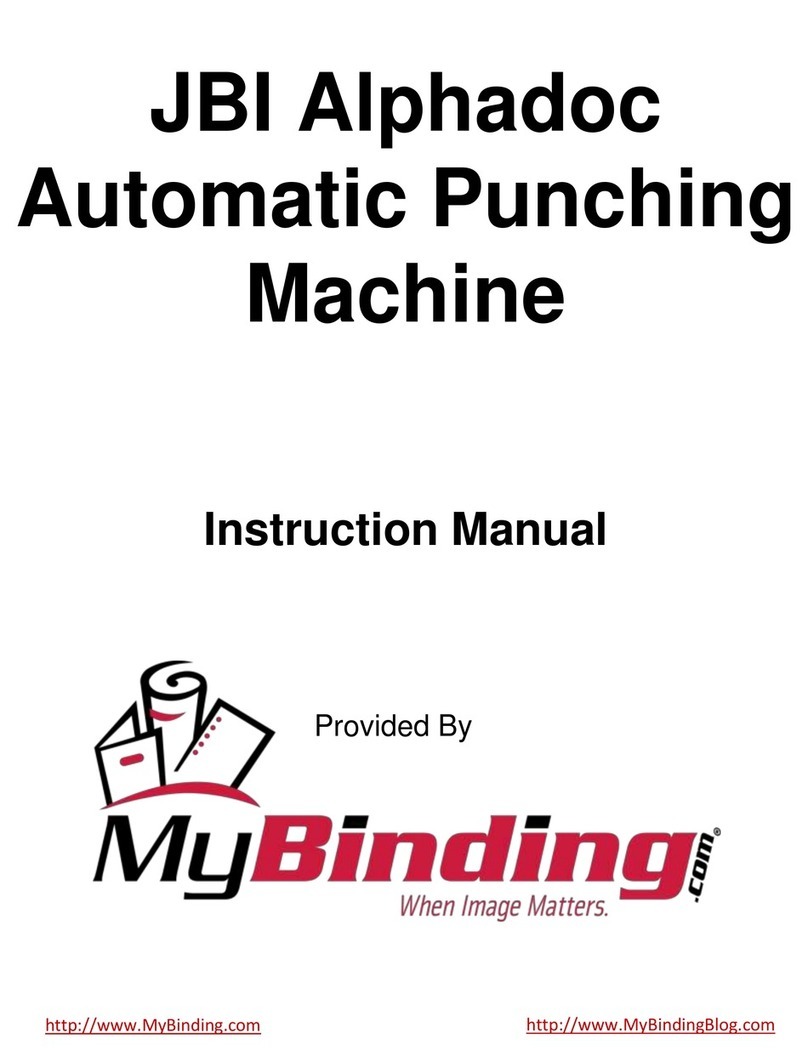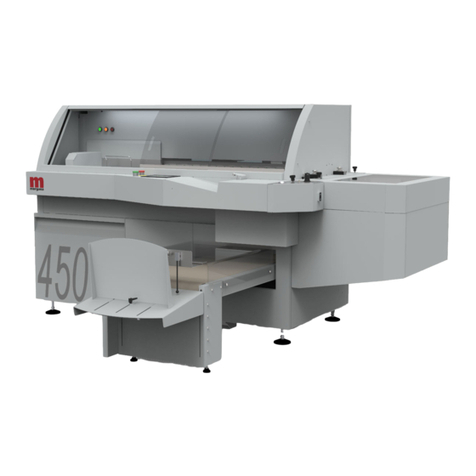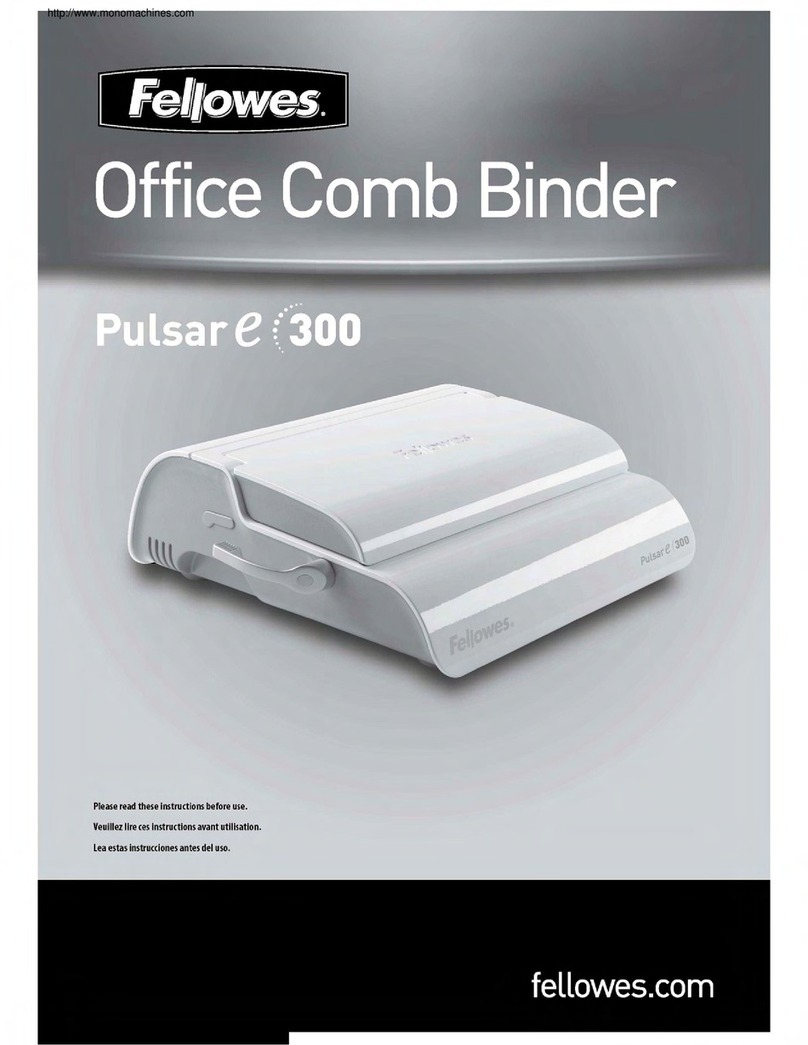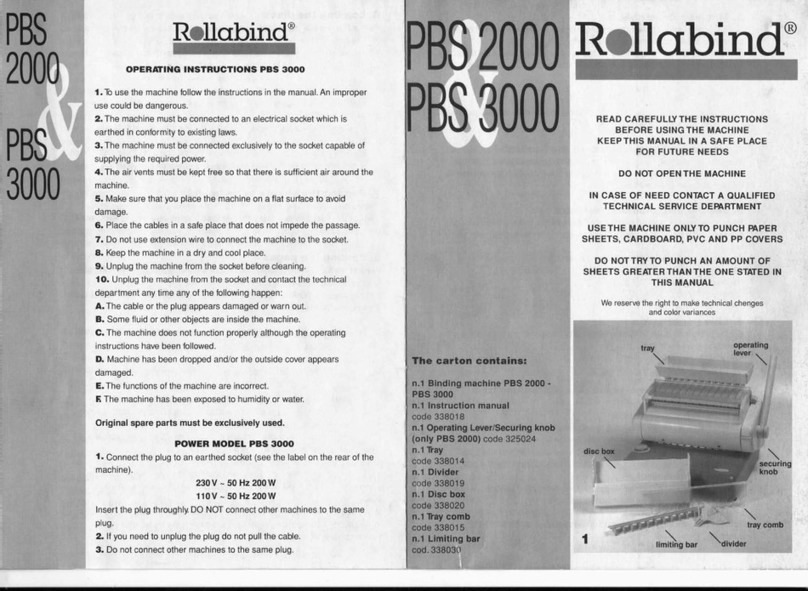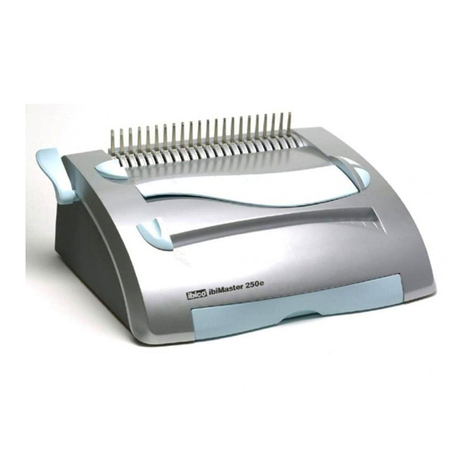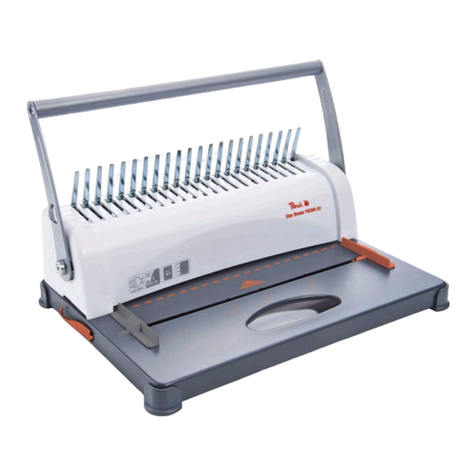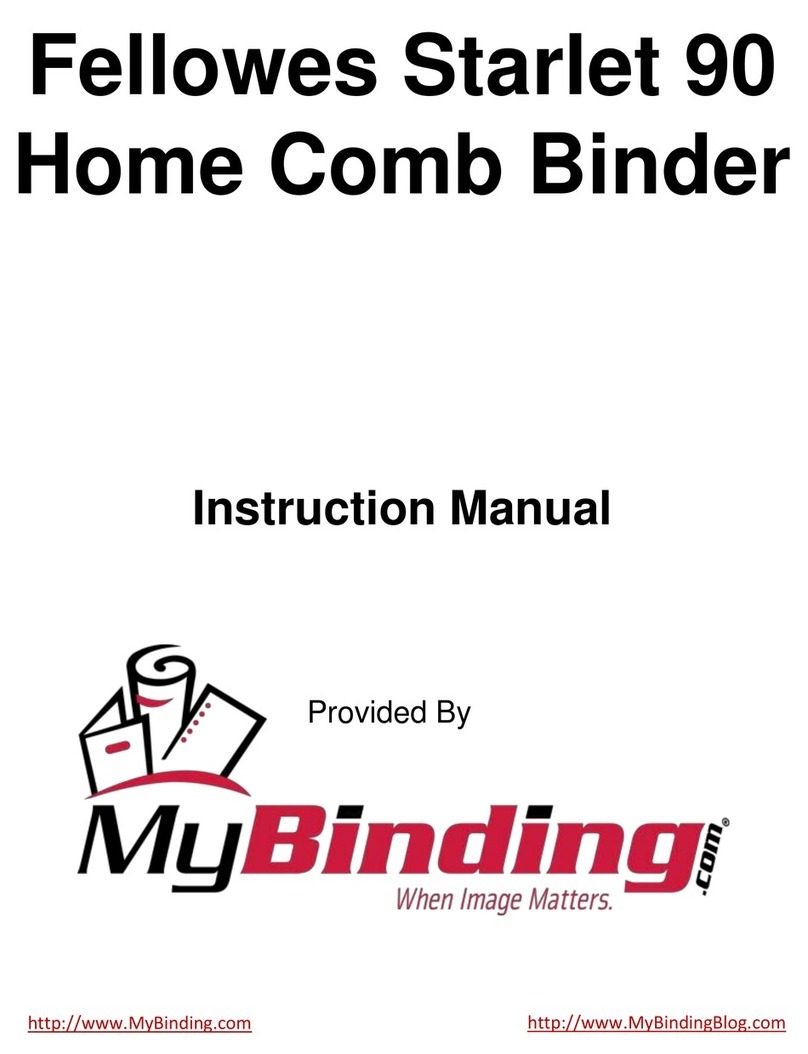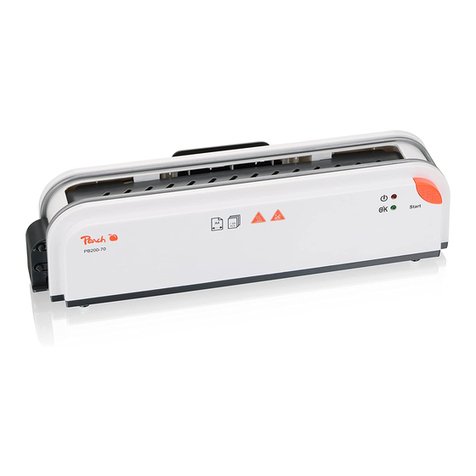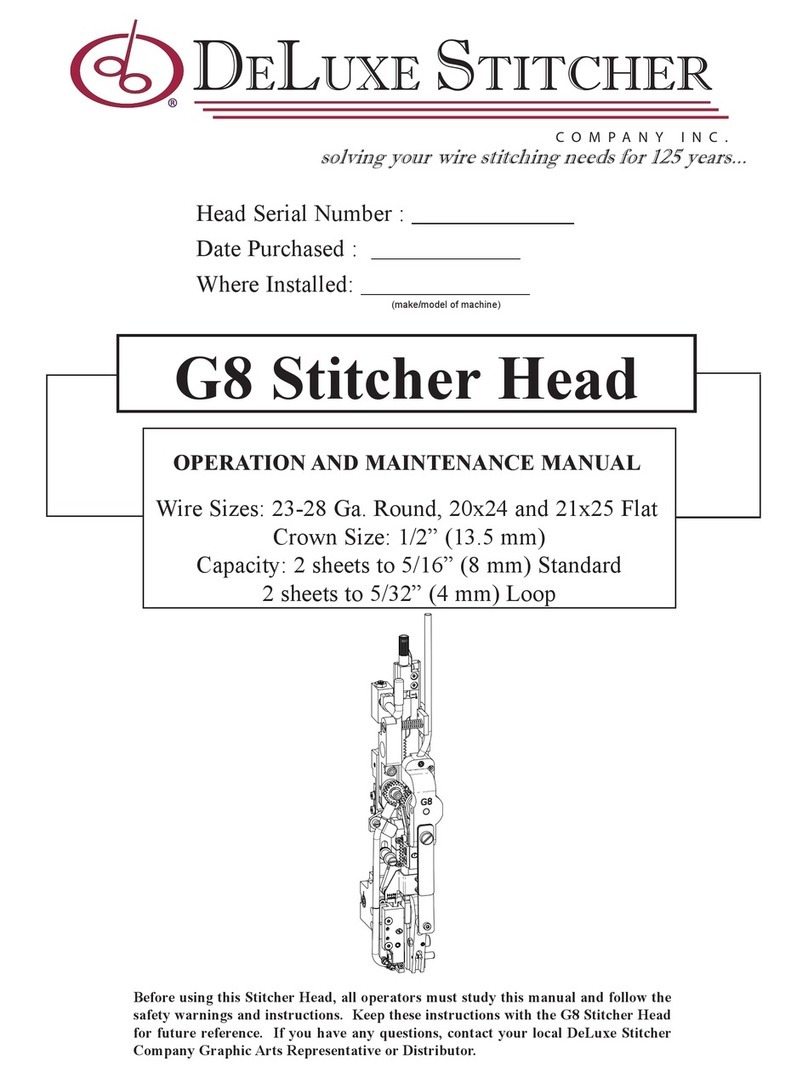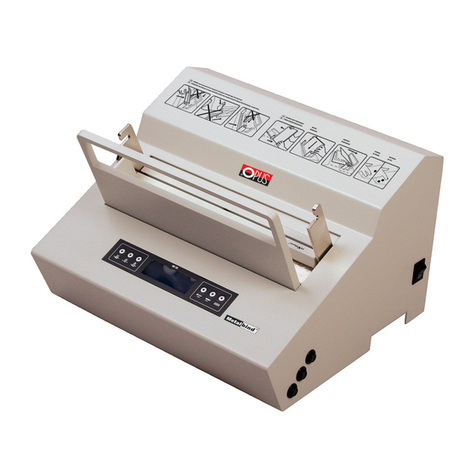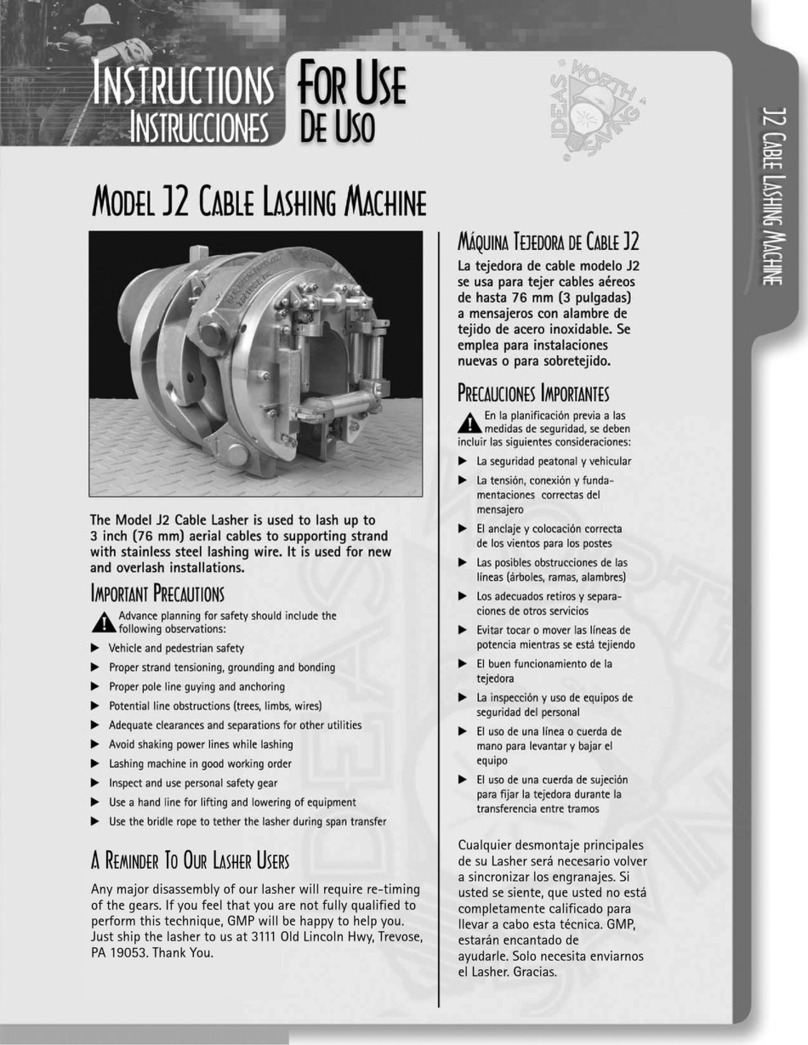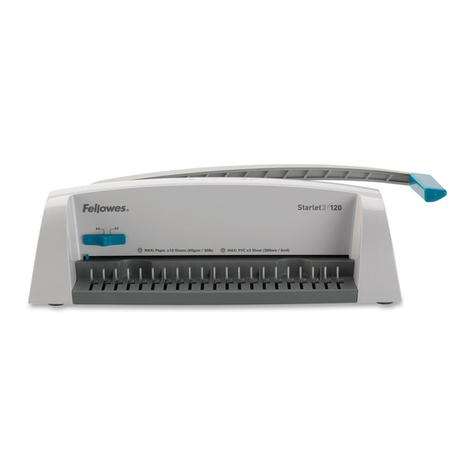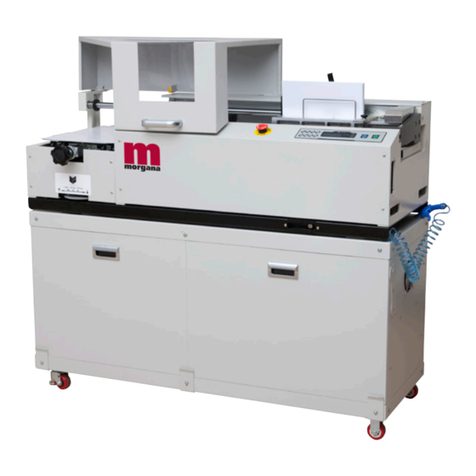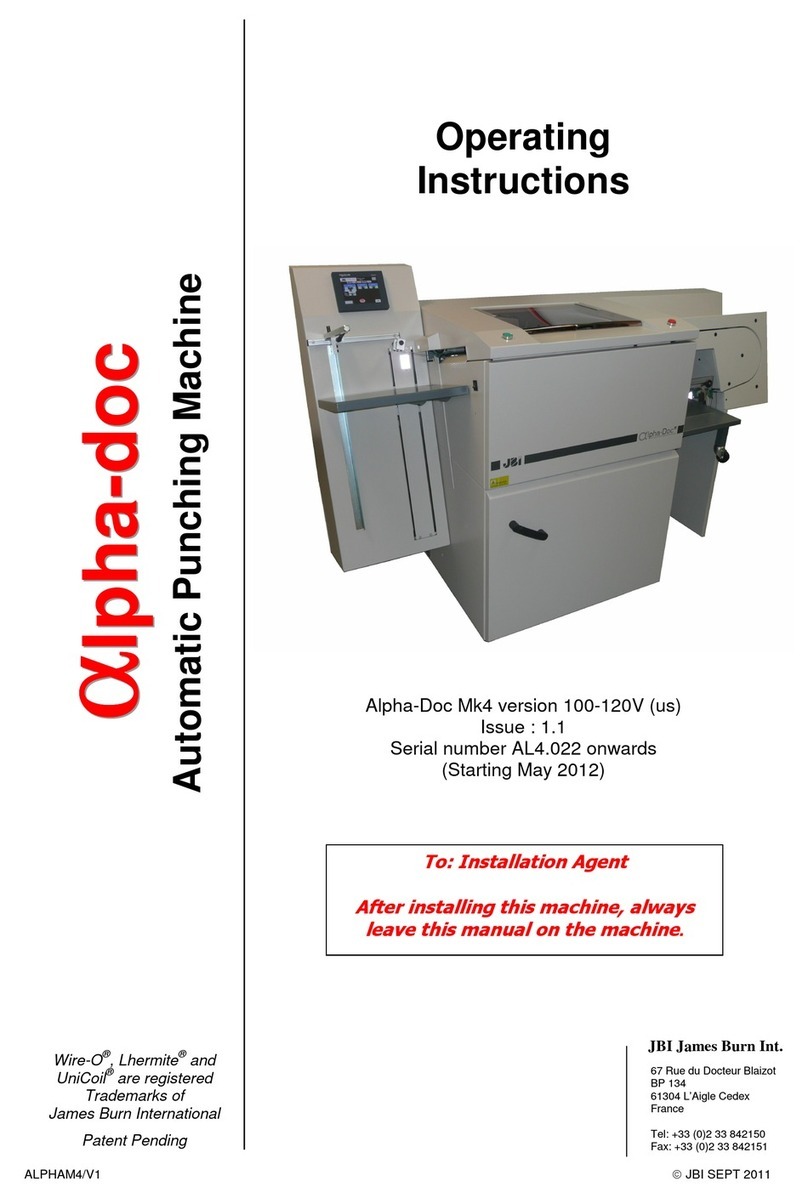8
Emplacement des pièces
1Bouton de verrouillage de peigne
(plastique/métal)
2Loquets de protection
3Butée papier réglable (perforation à 4 trous)
4Butée papier réglable (perforation à 21 trous)
5Porte-document
6Poignée de perforation
7Poinçons débrayables
(uniquement sur la MB 320)
8Indicateur de diamètre peigne plastique
(dans la fente de perforation)
9Support de peigne plastique/métal
JFente de reliure à peigne métal
(uniquement sur la MB 320)
KLevier de reliure
LFente de perforation (4 trous)
MFente de perforation (21 trous)
NSélecteur de profondeur de marge
(uniquement sur la MB 320)
OBac à confettis
Notification spéciale
Merci d’avoir choisi une thermorelieuse GBC. Nous visons à
produire des machines de qualité à un prix abordable et offrons
de nombreuses fonctions sophistiquées garantissant d’excellents
résultats à chaque usage. Avant d’utiliser votre machine pour
la première fois, veuillez prendre quelques minutes pour lire
attentivement ce guide.
Consignes de sécurité
VOTRE SÉCURITÉ AINSI QUE CELLE DES AUTRES EST IMPORTANTE
POUR ACCO BRANDS EUROPE. DANS CE MANUEL D’UTILISATION ET
SUR LE PRODUIT, VOUS TROUVEREZ DES MESSAGES DE SÉCURITÉ
IMPORTANTS. MERCI DE LES LIRE TRÈS ATTENTIVEMENT.
Veuillez noter que votre machine MultiBind a été conçue
exclusivement pour la perforation et la reliure de feuilles de papier
et de couvertures en plastique PVC. Ne l’utilisez pas à d’autres
fins, ni avec d’autres matériels. Vous assurerez ainsi un long cycle
de vie à votre perforelieuse et éviterez tout dommage mécanique.
• Pour éviter de surcharger votre machine, veuillez vérier le guide
de perforation maximum qui se trouve à l’avant de l’appareil
avant de perforer.
• Lorsque vous perforez des couvertures en PVC/PP, nous vous
recommandons de glisser la couverture entre deux feuilles de
papier avant de la perforer.
• NE PERFOREZ PAS d’objets métalliques comme des agrafes ou
des trombones.
• Veuillez vider régulièrement le tiroir à confettis.
• Assurez-vous que la machine est utilisée sur une surface plane
et stable.
• Ne soulevez jamais la machine par la poignée de perforation.
Utilisez toujours les poignées situées sur le côté de la machine.
• Pour éviter les risques de blessure, NE METTEZ PAS vos doigts
dans la voie de reliure métallique.
• La machine ne doit pas être exposé à des conditions d’humidité
/ de température susceptibles de provoquer de la condensation.
Température ambiante maximale ~ 40º C.
m
Conseils d’utilisation
Les poinçons de perforation de votre machine MultiBind ont été
revêtus d’huile pendant la fabrication an de les protéger contre la
corrosion et d’assurer leur fonctionnement optimal.
• Avant la première utilisation de l’appareil, nous vous conseillons
d’effectuer plusieurs opérations de perforation à l’aide de feuilles
de brouillon afin d’enlever toute trace d’huile des poinçons.
• Testez le système de perforation à l’aide de feuilles de brouillon
avant de perforer votre document final.
• Utilisez uniquement des accessoires et pièces GBC.
L’appareil ne nécessite aucune maintenance lorsqu’il est utilisé
correctement et uniquement aux fins prévues.
Spécifications
Type de perforation
Capacité de perforation maxi pour
feuilles de 80 g/m²
Capacité de perforation maxi pour
couvertures en PVC
Capacité de reliure approx.
(80 g/m²)
Formats papier
Taille maxi peigne plastique/métal
Fonction anti-bourrage
Poinçons débrayables
Sélecteur de diamètre de peignes
plastique/métal
Sélecteur de profondeur de marge
Autres fonctions
Dimensions (H x L x P) mm
Poids
GBC MultiBind 320
Manuelle
20 feuilles (CombBind &
WireBind 21) ; 30 feuilles
(perforation 4 trous)
2 couvertures PVC
(0,2 mm chacune)
450 feuilles, CombBind (peignes
plastique) ; 125 feuilles,
WireBind 21 (peignes métal)
A4, A5, 315 mm
51 mm CombBind (peignes
plastique), 14 mm WireBind 21
(peignes métalliques)
X
7 débrayables
3
3
Poignées rabattables
125 x 425 x 425
12,4 kg
GBC MultiBind 220
Manuelle
20 feuilles (CombBind) ; 30
feuilles (perforation 4 trous)
2 couvertures PVC
(0,2 mm chacune)
450 feuilles, CombBind (peignes
plastique)
A4, 315 mm
51 mm CombBind
(peignes plastique)
X
Fixes à 21 trous/4 trous
X
Fixe
Poignées rabattables
125 x 425 x 425
11,5 kg
